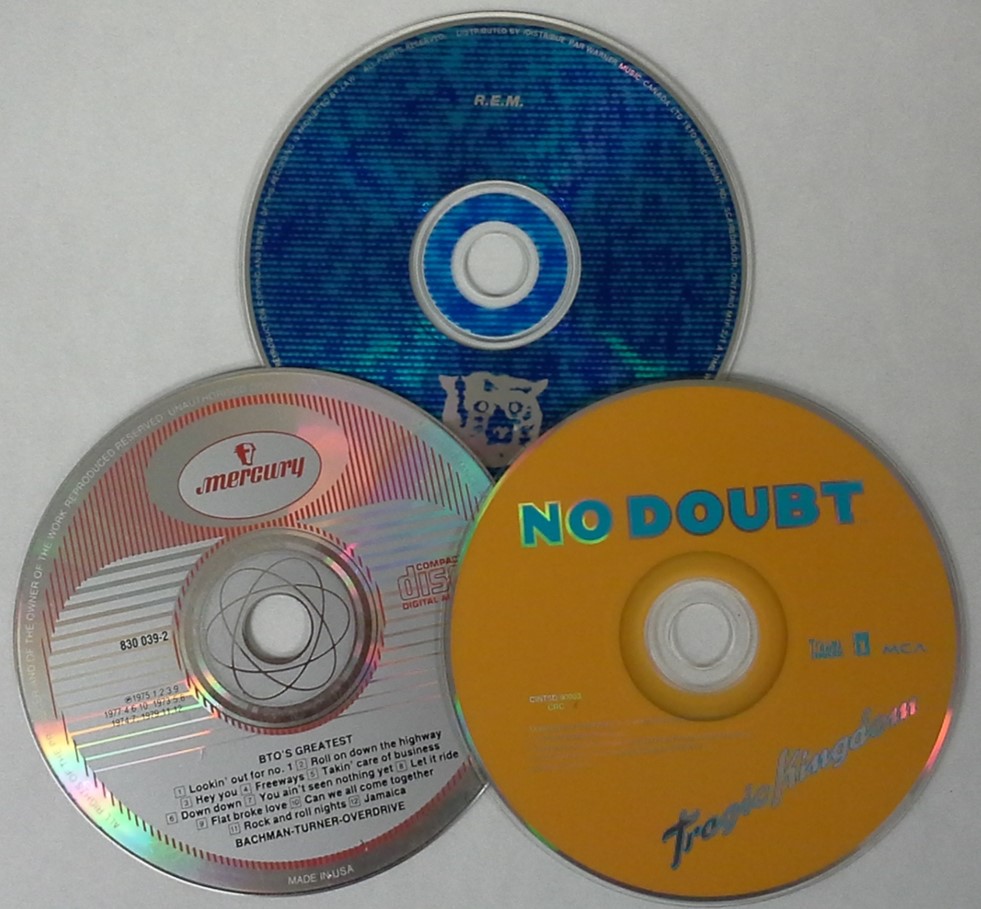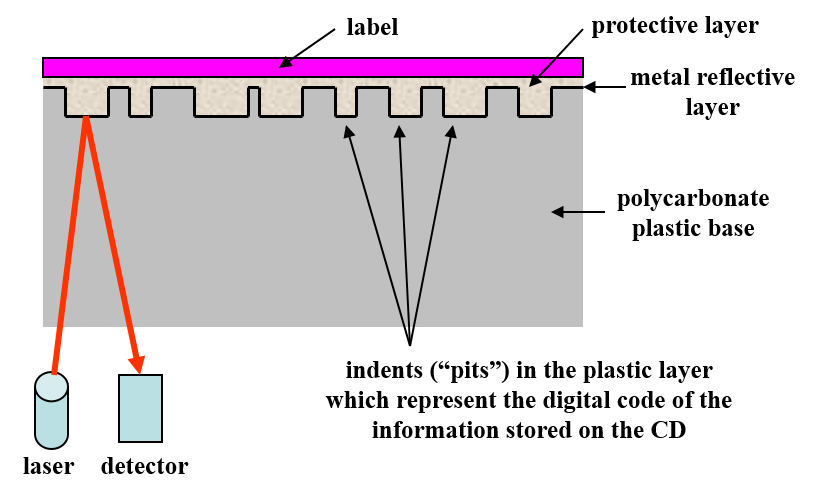Compact Disc Digital Audio
The compact disc digital audio format or music CD was the first CD format introduced into the marketplace in 1982. The goal was for this digital audio CD to replace the audio cassette and vinyl LP albums with the music buying public.
After a slow start, the format gained momentum in the marketplace and the audio compact disc became the main method for the distribution of audio.
A Read-Only Format
The digital audio CD is a read-only format, or in other words, the information is placed on the disc when it is manufactured.

Therefore, these discs are purchased with the information already on them and the user can only play or read the discs. No additional information can be added to this type of disc and no information can be erased. However, you can produce discs with all the same elements as audio CDs using the CD-R and CD-RW formats although these are not read-only discs.
Compact Disc Digital Audio Base and Pit Structure
The physical structure of the compact disc digital audio format is the same as all other read-only compact disks and is shown in the cross-section diagram below.

The majority of the 1.2 mm disc thickness is a very clear polycarbonate base. Molded into the top of the polycarbonate plastic are very tiny indents or pits that are laid out in a spiral pattern that starts from the inner portion of the CD and ends on the other portion. The audio CD plays from the inside out, which is opposite to the way that vinyl LPs played. If you follow the spiral, you get millions of alternating areas of indents or pits and non-indents or non-pits. It is these pits, which are of varying width, that are responsible for generating the digital "1"s and "0"s of the digital information that get decoded to produce the audio information. More specifically, as illustrated in the picture below, every flat area represents "0"s whereas the transition points between and pits and lands represent "1"s.

Metal Reflective Layer in Audio CDs
In order for the digital audio CD to be readable, a metal layer made of aluminum or aluminum alloy is deposited onto the top of the polycarbonate plastic and pits. When laser light reads the digital audio CD it does so through the base or non-label side of the disc. The laser light then hits a pit or non-pit area and gets reflected back to the detector of the player or reader to create a signal. This light signal is interpreted as a digital 1 or 0 (as discussed above) and the digital code for the information is created.
Protective Layer and Label
The metal reflective layer is a very thin layer and susceptible to chemical oxidation or corrosion and physical damage. Any kind of disruption of this layer will lead to errors or an unplayable digital audio CD. Therefore, a protective layer is applied over the metal. Finally, with all compact disc digital audio formats, a label is silk screened on top of the protective layer. The music CD is then placed in a jewel case with various liner notes with lyrics, pictures, and information about the artists, etc.
Red Book Standard for Audio Recording
Many like the digital audio compact disc because there is quick and random access to the different tracks on the disc. The compact disc digital audio format also provides great sound, although some prefer the sound from the old analog LP vinyl albums. The audio information on an audio CD conforms to a standard called the Red Book – the standard for audio compact disks. This standard indicates that sampling of an analog audio signal occurs at 44.1 KHz, which is roughly twice the amount that is audible by humans. The bit size of each sample is 16 bit, which allows for 65,536 different sounds. The Red Book standard also provides many other specifications that a digital audio CD needs to have such as maximum playing time, maximum number of tracks, error correction, etc. Red book audio CDs can be played in audio CD players and computer drives.
Note that you can also create audio CDs on recordable and erasable CD media. These CDs can be made to conform to the Red Book and play in all players or can consist of different formats of audio files than what the Red Book specifies. These latter discs with audio information on them will not play in stand alone audio CD players as these are only meant to recognize Red Book standard audio CDs.
CD-Audio Disc Longevity
Because of the structure of the compact disc digital audio format, the stability is good. Indications are that the read-only CD formats of all types, whether they are audio CDs or CD-ROMs containing software, will have an average lifetime of 50 to 100 years. Most will be in the lower end of th This assumes the discs are stored in a fairly clean environment and the temperature and relative humidity levels for acceptable storage are respected.
Of course this is an average lifetime value and so monitoring of your audio CDs should occur on a regular basis in order to evaluate their condition. A five to ten year monitoring interval is considered reasonable.